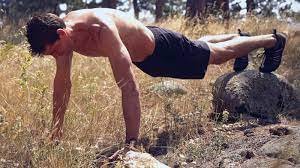Calisthenics, a form of exercise rooted in bodyweight training, has exploded in popularity due to its adaptability and efficiency. But did you know that this powerful workout regime can encompass both isometric and isotonic exercises? Delve into the world of calisthenics and discover the science behind its versatility!
What is Calisthenics?
In essence, calisthenics leverages your body weight against gravity. It empowers individuals to forge a resilient body with minimal equipment, building strength, agility, and flexibility.
The Science: Isometric vs. Isotonic Exercises
Isometric exercises involve contracting your muscles without moving your joints. They build strength and stability. Picture holding a plank—your muscles are engaged, but you’re not moving.
Isotonic exercises, on the other hand, involve muscle contractions with movement. Think push-ups, squats, or pull-ups. These exercises help in sculpting and strengthening different muscle groups.
Why Include Both in Your Routine?
Integrating both isometric and isotonic exercises can offer a balanced and comprehensive workout, targeting different aspects of fitness.
- Maximized Muscle Activation: Isometric exercises engage a higher percentage of muscle fibers.
- Functional Strength: Isotonic movements align more with everyday activities.
- Joint Health: A combo approach can reduce joint stress and enhance flexibility.
Crafting the Perfect Workout
Blending isometric and isotonic workouts isn’t just about mixing and matching. It’s about strategically synergizing exercises for optimal results.
Begin with Isometric Holds
Starting with isometric exercises like wall sits or L-sits primes your muscles. It’s an exhilarating warm-up that pushes you to the edge!
Transition to Isotonic Movements
After your muscles are fired up, shift to isotonic exercises. From lunges to dips, this phase boosts your heart rate, enhancing cardiovascular health and muscle endurance.
Wind Down with Stretching
After a rigorous session, calm your muscles with static stretches, aiding in recovery and flexibility.
FAQs:
1. Can beginners try both isometric and isotonic exercises?
Absolutely! Start slow and gradually increase intensity and duration.
2. Do I need equipment for these exercises?
Mostly no. Your body is your primary equipment. However, items like pull-up bars can expand exercise options.
3. How often should I train?
For beginners, 3-4 times a week is ideal. Listen to your body and adjust accordingly.


